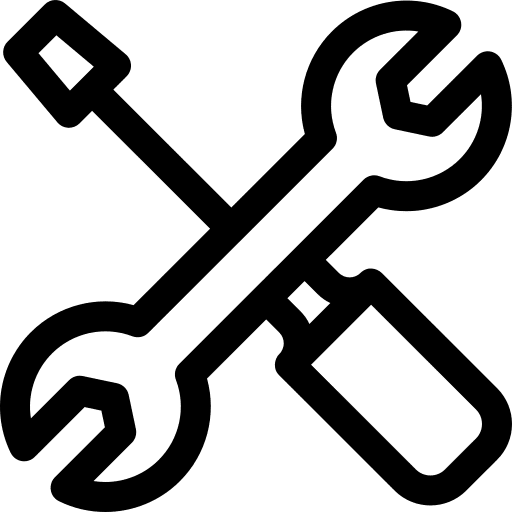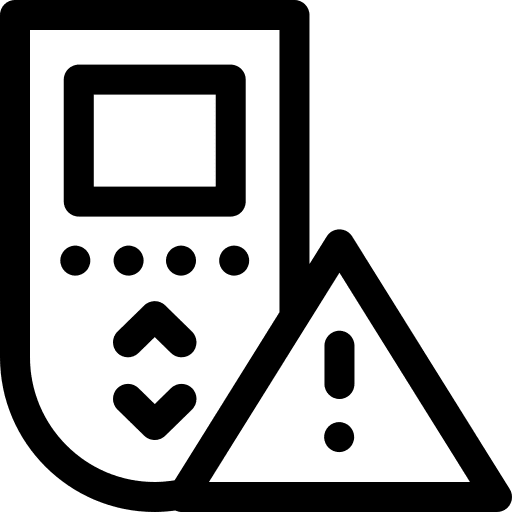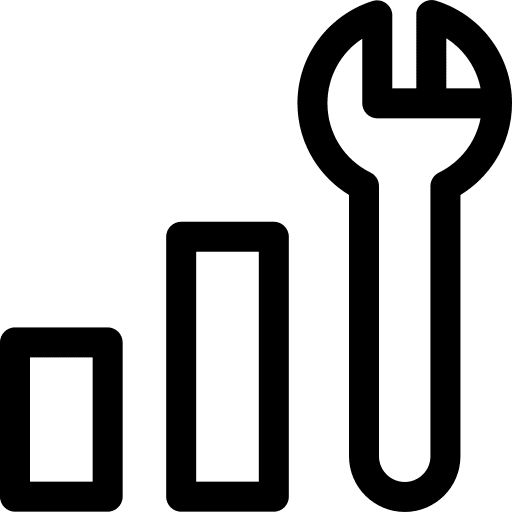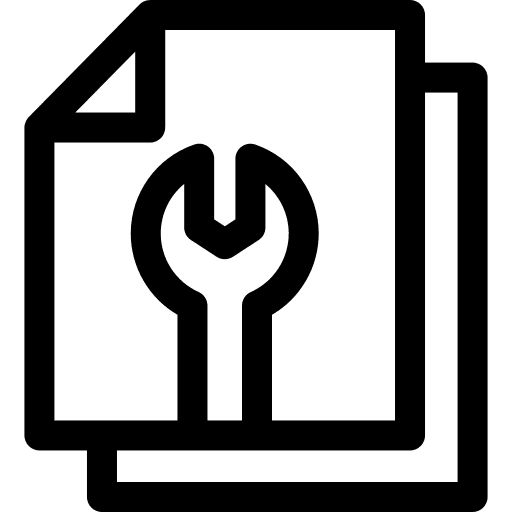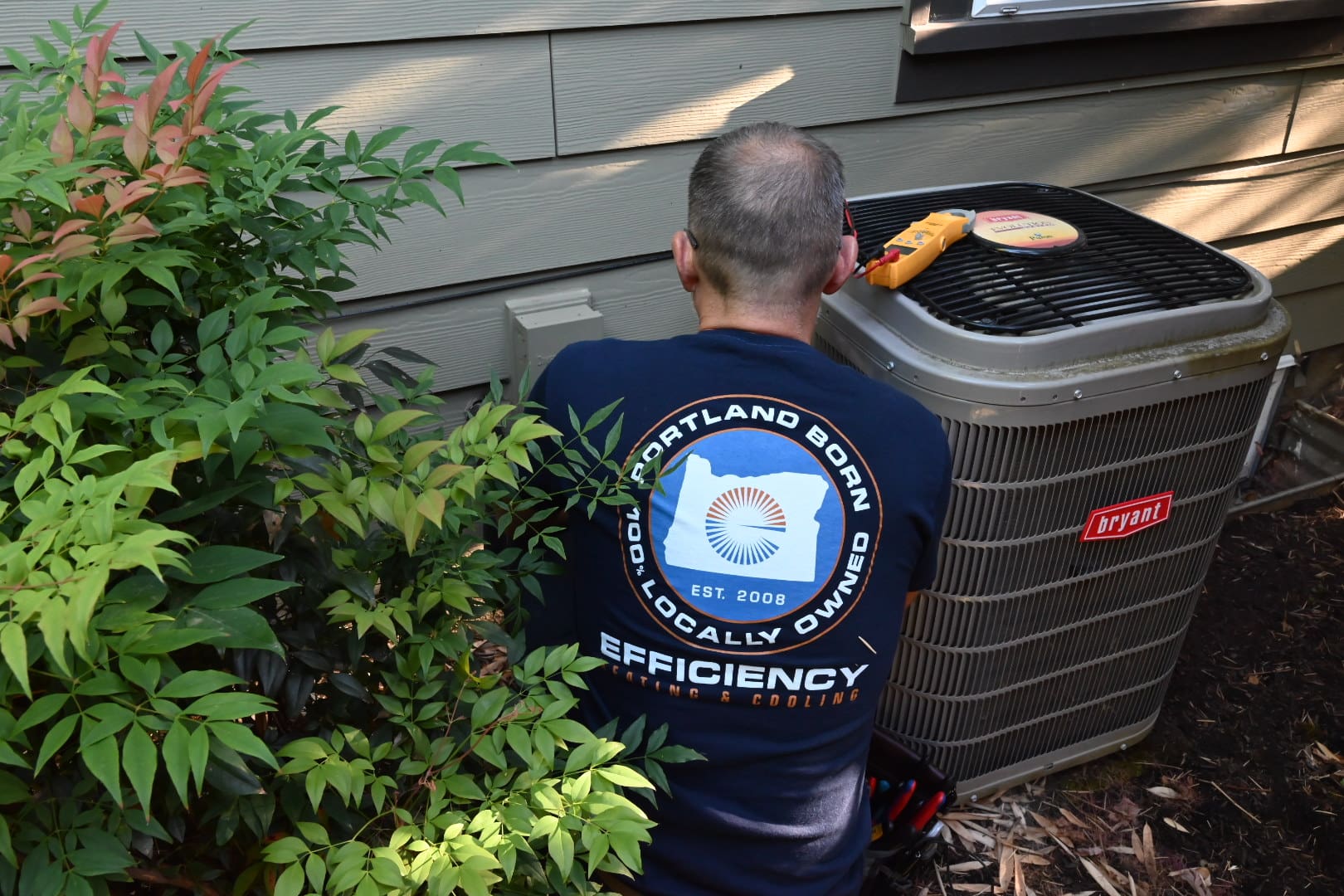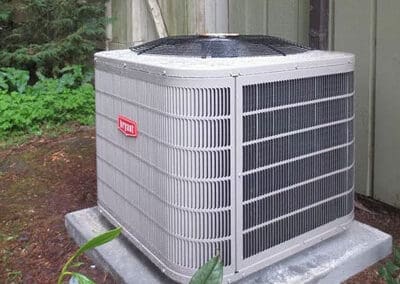Efficiency Heating & Cooling
Ultimate AC Tune up For Improved Efficiency in Portland, OR
Get your air conditioner ready for the summer with our AC tune-up. Efficiency Heating & Cooling provides top HVAC service, ensuring optimal performance for your cooling system.
🧊 Maximize Efficiency – Book Your AC Tune-Up Today in Portland!
Expertise
Our certified technicians bring years of experience and skill to ensure your AC installation is seamless and efficient.
Efficiency
Our premium AC systems help you enjoy lower energy bills and optimal cooling performance with smart technology.
Comfort
Our advanced AC solutions enhance indoor comfort and air quality, tailored to meet your home’s cooling needs.
Looking for an AC Tune-Up Near Me?
If your air conditioner hasn’t been serviced recently, Efficiency Heating & Cooling is here to provide a comprehensive tune-up to ensure your system is operating at peak efficiency. Our expert technicians will thoroughly inspect and optimise your AC unit, enhancing its performance and reliability.
Regular AC tune-ups can reduce energy bills, improve air quality, and extend the lifespan of your system.
Contact us today for a free consultation and discover how a professional tune-up can enhance your home’s comfort and efficiency!
🛠️ Time for an AC Tune-Up? We’re Your Local HVAC Pros 🔧
Efficiency Heating & Cooling are Pros When it Comes to Tuning Up Residential & Commercial HVAC Systems
🔁 Get Your System Summer-Ready! Tune-Up Now, Stay Cool Later ☀️
Read Real Reviews About Our
Greater Portland AC Tune Up Service
📍 AC Tune-Up Near Me? We Serve Portland & Nearby Areas!
PORTLAND’S AIR CONDITIONER TUNE-UP SERVICE EXPERTS
Explore our comprehensive AC tune-up services designed to enhance the comfort and energy efficiency of your residential and commercial spaces. Whether your system needs routine maintenance or a detailed inspection, our expert team is ready to provide top-notch service to keep your AC running smoothly.
Contact us today to discuss your air conditioning maintenance needs or to schedule a tune-up and ensure your system is operating at its best.
💨 Air Conditioner Running Weak? A Quick Tune-Up Fixes That Fast!
For Local PDX Air Conditioner Tune-Ups Get Expert AC Support
We’re thrilled you found us online and hope you’ll choose us for your AC tune-up needs. As a NATE Certified contractor, we specialize in maintaining energy-efficient cooling systems for homeowners seeking optimal performance.
Our BBB A+ rating reflects our unwavering commitment to customers, technical expertise, and unbeatable competitive pricing. Reach out today to ensure your AC system operates efficiently and reliably, providing optimal comfort throughout the year.
🔧 HVAC Tune-Up Done Right – Backed by 15+ Years of Local Experience!
📞 Call Today for AC Tune-Up in Portland: (503) 908-6066
Not Seeing What You Need?
Contact Us For Customized AC Tuning Solutions or Any HVAC Questions
📅 Book a 20-Point Tune-Up and Save Big on Summer Bills!
More Information
Contact Us Today If You Want an AC
Tune Up Done by Professionals!
We’re happy you found us online, and we sincerely hope you’ll consider us for your air conditioning installation needs! We’re a NATE Certified contractor, a BBB A+ rated business, and our commitment to our customers, technical knowledge and competitive pricing combination simply cannot be beat.
Premium Air Conditioning Installation
Our Oregon summers may not have the extreme heat of the desert but that doesn’t matter. To a local, our summers are still hot, and a cool home is a must in order to enjoy the season. We’re honored to serve the area with air conditioner repair, maintenance and new installation in Oregon.
Quality HVAC Installation
You can purchase the finest indoor coil, furnace, thermostat, air conditioner, ducting, air filter, UV lamp and other related equipment, but if these things are not sized, designed and installed the right way, you could end up with a system that doesn’t work efficiently. Efficiency Heating & Cooling is an air conditioning installation company who does the job right. We are NATE certified and licensed.
There’s Nothing Like A Job Done Right
If there is anything we want you to walk away with today, it’s the extreme importance of the design and installation of your heating and air conditioning system. You can purchase the finest equipment on the planet, but it will still fail if not installed correctly. We’re an air conditioning installation company who has the technical knowledge and industry experience that’s required to do the job right.
We Have The Right Foundation
The quality of your air conditioning installation is the most important aspect of home comfort. But that doesn’t do away with the importance of the right equipment as the foundation. Efficiency Heating & Cooling is proud to be a Bryant Factory Authorized Dealer. We install Bryant because we believe in the quality of the equipment. And make no mistake, we’ve installed them all. American Standard, Trane, Carrier, Lennox and more. We sleep well at night knowing our customers have the right solutions in their home.
When you’re not out on the stream, at work or enjoying nature in some other way, you’re typically at home. The comfort your home is of the utmost importance, because home is the safe place from the chaos of the world. It’s where you make memories with family and friends. It’s that thing we just can’t live without, and Efficiency Heating & Cooling is honored to be a trusted air conditioning installation company.
The Gap Is Large
There is a large gap between us and our competition. Meaning, it’s hard to even compare them to us. Why? Because our level of customer dedication permeates every area of our company. Customer satisfaction isn’t a goal, it’s a given. Customer service isn’t a sign on the wall, it an action executed every day. We’re in the comfort business. The long-term comfort business. When you trust us for air conditioning installation – you will end up extremely happy.
Equipment from Leading Manufacturers
Part of giving our customers the best is using quality equipment. The age-old adage “You get what you pay for” is definitely true with HVAC equipment. We’ve installed all makes and models of air conditioners, heat pumps and furnaces from manufacturers like Carrier, Bryant, Lennox, Trane and more. The result? We’ve chosen Bryant equipment as our primary offering as it stands up to the tough demands we have for our air conditioning installations.
What Is an AC Tune-Up?
An AC tune-up is a simple but important service for your air conditioning unit. It’s all about making sure your HVAC system runs well and uses energy smartly. During a tune-up, a skilled technician will:
- Check the system for any damage or wear
- Clean parts to help everything work better and last longer
- Test airflow and check refrigerant levels
- Look at electrical connections to keep things safe
- Make sure it’s energy efficient, which can lower your bills
Regular air conditioning maintenance helps avoid big repairs later on and keeps your cooling system in great shape.
Why Is an AC Tune-Up Important?
Getting an AC tune-up is super important for several reasons:
- Saves Energy: Keeping your system maintained means it uses less energy, which lowers your bills.
- Better Air Quality: A tuned-up air conditioning unit filters out dust and bad stuff, so the air in your home is cleaner.
- Stops Breakdowns: Doing preventive maintenance helps spot problems early, reducing the chance of emergency fixes.
- Increases Equipment Life: Regular care for your HVAC system can help it last longer, so you won’t have to replace it as soon.
Investing in seasonal HVAC service not only makes your home more comfortable but also protects your investment.
Signs Your AC Needs a Tune-Up
Pay attention to these signs that show your air conditioning unit might be in need of a tune-up:
- Rooms are Different Temperatures: If some spaces feel hotter or cooler than others, your system may have issues.
- Strange Sounds: Noises like grinding or rattling could mean something is wrong inside.
- Weak Airflow: If you notice poor airflow, it could be clogged filters or other problems that need fixing.
- Higher Energy Bills: If your energy costs suddenly spike, it might be a sign your AC is struggling.
- Short-Cycling: If your air conditioner keeps turning on and off quickly, it needs attention.
If you see any of these signs, it might be time for an AC maintenance check.
For questions or to schedule your next AC tune-up, contact us at Efficiency Heating & Cooling! We’re ready to help keep your HVAC system working its best all year long.
Why Is an AC Tune-Up Important?
Keeping your AC in good shape is super important. Regular AC maintenance helps your system work better and longer. Here are some great reasons to get a tune-up:
- Saves Energy: A well-tuned unit uses less energy, which can help you save money on your bills.
- Lasts Longer: Regular air conditioning maintenance can make your HVAC system last for many years.
- Better Air Quality: A tune-up checks filters and cleans the system, leading to cleaner air in your home.
- Less Chance of Breakdowns: Fixing small problems during maintenance means you avoid big issues later on.
- Cooler Home: You’ll stay comfortable as your AC works its best to keep indoor temperatures nice and cool.
Signs Your AC Needs a Tune-Up
Watch out for these signs that your AC might need a tune-up:
- Weak Airflow: If the air coming from your vents feels weak, it may be time to check filters or ducts.
- Odd Noises: Sounds like banging or hissing can mean something’s wrong with your unit.
- Uneven Temperatures: If some rooms feel warmer than others, it might need attention.
- Higher Energy Bills: A spike in your utility bill could mean your air conditioning isn’t working right.
- Refrigerant Issues: If you notice leaks or a drop in cooling power, it’s important to call a pro right away.
How to Choose an AC Tune-Up Company
Picking the right company for your AC tune-up matters a lot. Keep these tips in mind:
- Look at Reviews: Read what other customers say about their experiences to find a good reputation.
- Experience Counts: Go for a company that knows its stuff when it comes to HVAC service.
- Compare Prices: Make sure the prices seem fair and fit your budget.
- Check Certifications: Ensure the technicians are certified to work on air conditioning systems.
- Ask About Services: They should provide a thorough system efficiency check and various HVAC cleaning tasks.
Benefits of Regular AC Tune-Ups
Regular AC maintenance comes with loads of benefits:
- Lower Energy Costs: More efficient systems use less energy, which helps you save money.
- Longer Lifespan: Taking care of your AC helps prevent the need for early replacements.
- Better Cooling: You’ll enjoy more consistent cooling during those hot summer days.
- Quieter Operation: Well-tuned systems make less noise, making your home more peaceful.
- Compressor Checks: Regular inspections catch potential compressor issues before they become costly repairs.
Steps Involved in an AC Tune-Up
A complete air conditioning service includes important steps:
- Replace Air Filters: Clean filters improve airflow and air quality.
- Inspect System: Technicians check all parts for any signs of wear or problems.
- Clean Condenser: Regular cleaning helps keep your system efficient.
- Check Blower Motor: Ensures proper air circulation throughout your home.
- Test Refrigerant Levels: They look for correct levels and any leaks.
- Clean Evaporator Coils: Keeping these coils clean helps maintain strong cooling power.
DIY AC Tune-Up Guide
Feeling handy? Here’s a quick DIY guide for basic air conditioner maintenance:
- Stay Safe: Always turn off the power before doing any work on your AC.
- Check Filters: Change or clean the filter monthly for best results.
- Examine Refrigerant Levels: If low, call in a pro to recharge it.
- Look At Duct Insulation: Make sure ducts are insulated properly to cut down on energy loss.
- Clear Drain Lines: Cleaning out clogs helps with drainage and humidity control.
- Test Your Thermostat: Make sure it’s set right so your home stays comfortable.
Troubleshooting Common AC Problems
If your AC is acting up, try these troubleshooting tips:
- Water Leaks: Check for blocked drain lines or a full pan that needs emptying.
- Electrical Issues: Inspect fuses or circuit breakers if the AC won’t start.
- Find Refrigerant Leaks: Look for oily spots along refrigerant lines.
- Improve Airflow: Make sure vents are clear and registers are clean.
- Check Temperature Settings: Adjust the thermostat and see if it reflects your desired temp.
FAQs About AC Tune-Ups
Q: How much does an AC tune-up cost?
A: It usually costs between $75 to $150, depending on what services you choose.
Q: How often should I have a tune-up?
A: Once a year is best, especially before warm weather starts.
Q: What happens during an AC tune-up?
A: Expect to see inspections, cleaning, filter changes, and refrigerant level checks.
Q: Will regular tune-ups really help lower my energy bills?
A: Absolutely! A more efficient AC uses less energy, which can really cut costs over time.
For all your AC maintenance needs, reach out to Efficiency Heating & Cooling today! Our expert team is ready to help ensure your HVAC system runs smoothly. Don’t wait—schedule your tune-up now!
How to Choose an AC Tune-Up Company
Choosing the right AC service provider is super important for keeping your air conditioning system in good shape. Here are some simple tips to help you find the best HVAC service in Portland, OR, Clackamas, and Multnomah:
- Check Reputation: Look for companies with lots of positive customer reviews. This gives you a good idea of how reliable they are and the quality of service they provide.
- Verify Certifications: Make sure the company has certified technicians. They should be trained in HVAC cleaning and seasonal HVAC service.
- Inquire About Services: Ask if they do comprehensive air conditioning maintenance and if they know about different types of AC systems out there.
- Ask About Energy Efficiency Tips: A good company should share tips on how to improve your system’s energy efficiency.
By focusing on these areas, you can feel good about your choice of an AC tune-up company.
Benefits of Regular AC Tune-Ups
Keeping up with regular AC maintenance is key for many reasons:
- Improved Efficiency: A well-maintained air conditioner runs better, which means it uses less energy and lowers your utility bills.
- Enhanced Indoor Air Quality: Regular check-ups can make the air inside your home healthier.
- Preventive Maintenance: Routine tune-ups can catch small issues before they become costly repairs, which saves you money.
- Extended Lifespan: Taking care of your AC can help it last longer and run smoothly for more years.
- Performance Testing: A system efficiency check keeps your unit performing at its best, especially when summer heat hits.
Investing in regular AC tune-ups can really pay off with better performance and savings.
Steps Involved in an AC Tune-Up
An air conditioning tune-up usually includes several important steps:
- Inspection: Technicians will look over your air conditioning unit to check its overall condition.
- Refrigerant Levels Check: They’ll make sure refrigerant levels are just right for good cooling.
- System Pressure Check: Evaluating the pressure is essential to keep things running efficiently.
- Blower Motor Inspection: The blower motor will be checked for signs of wear or any problems.
- Cleaning Coils: Cleaning the evaporator coil and condenser helps improve heat exchange.
- Capacitor Evaluation: Assessing the capacitor makes sure it’s working properly.
These steps make sure your AC is all set for the hot summer months ahead.
DIY AC Tune-Up Guide
You can do some basic AC maintenance yourself! Here are a few easy steps:
- Safety First: Always turn off the power before doing any work on your air conditioner.
- Air Filter Replacement: Change out the air filter regularly to keep airflow strong and efficient.
- Condenser Cleaning: Clear away debris from around the outdoor unit to avoid blockages.
- Thermostat Calibration: Double-check and adjust your thermostat settings for accurate control of temperature.
- Troubleshooting Common Issues: Learn to spot signs like strange noises or less cooling so you can deal with problems early.
- Airflow Optimization: Make sure vents are clear so airflow is not blocked.
Doing these DIY tasks can help keep your AC running smoothly.
Troubleshooting Common AC Problems
If your air conditioner isn’t working right, look out for these common problems:
- Leak Detection: Check for refrigerant leaks that might impact cooling efficiency.
- Water Issues: Look for water pooling around the unit; this could mean drainage problems.
- Unusual Noises: Pay attention to any strange sounds that could indicate mechanical issues.
- Electrical Components: Inspect electrical parts for any signs of damage or wear.
- Temperature Control Evaluation: Make sure your AC keeps the right temperatures consistently.
Addressing these problems quickly can help prevent bigger issues later.
FAQs About AC Tune-Ups
Here are some common questions about AC tune-ups:
- What is included in an AC tune-up?
An AC tune-up typically includes an inspection, checking refrigerant levels, cleaning, and testing performance. - How much does an AC service cost?
Prices differ based on services and companies, but having preventive maintenance often costs less than waiting for big repairs. - How often should I schedule a tune-up?
It’s best to have an HVAC system tune-up at least once a year, especially before the cooling season. - Are there scams to watch for?
Always choose licensed and certified companies and read reviews to stay safe from scams. - Can I get emergency HVAC service?
Yes, many companies offer emergency HVAC service for urgent situations.
Regular AC tune-ups are important for keeping your air conditioning system performing well and lasting longer. For great service, reach out to Efficiency Heating & Cooling today! Our skilled team is ready to help with all your AC needs. Contact us now at [your phone number] or visit our website for more info.
🔧 Professional AC Tune-Up Services in Portland
Get more from your cooling system with a seasonal AC tune-up. At Efficiency Heating & Cooling, we provide 20-point inspections and thorough cleaning to improve performance and prevent breakdowns.
✅ AC tune-up near me services
✅ Energy-saving adjustments
✅ Air conditioner tune-up for all brands
📍 Local AC Tune-Up Companies Near Me
Searching for “AC tune up near me” in Portland? Our team serves residential and commercial clients with fast, affordable tune-up services.
From filters and refrigerant checks to airflow tests, we make sure your system runs efficiently and reliably.
🔁 Why HVAC Tune-Ups Matter?
An annual HVAC tune-up near me can:
Extend your system’s lifespan
Prevent costly emergency repairs
Lower your monthly energy bills
Improve indoor air quality
📅 Book your Portland tune-up today and beat the summer rush!
💨 Full-Service Air Conditioner Tune-Up Packages
We offer:
Standard AC tune-up service
Smart thermostat checks
Outdoor unit cleaning
Blower motor inspection
Full safety and electrical checks
Whether you’re in East Hope, Cornelius, or central Portland, we’ve got you covered.
Frequently Asked Questions
How much does an AC tune-up cost in Portland?
Most tune-ups cost $100–$250, depending on system size and condition.
Is an AC tune-up really necessary?
Yes — it prevents breakdowns, improves cooling, and extends your system’s life.
What’s included in a tune-up?
A full 20-point inspection, cleaning, filter check, and system performance test.
How long is an AC tune-up?
Is AC tune-up worth it?
What does Home Depot AC tune-up include?

























